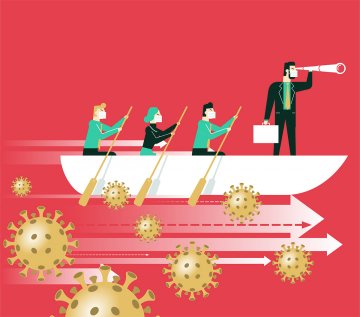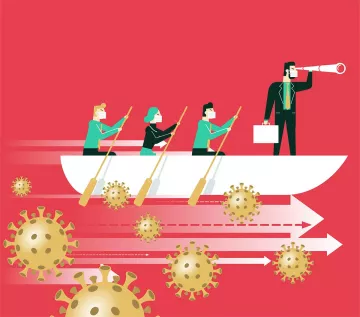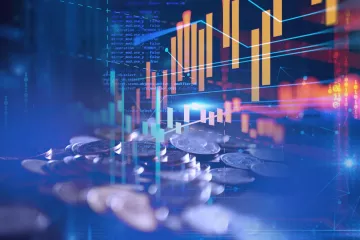Why is investing in R&D during a pandemic-caused recession a necessity?
Was 2008 the dress rehearsal for 2020?
If at the beginning of March, the manufacturers of the automobile, chemical, electronics, and aircraft had been facing concerns regarding supply chain disruption, now, it is expected for entire economies to be facing the 2008 financial crisis all over again.
According to a flash estimate published by Eurostat – in 2020 seasonally
adjusted GDP decreased by 3.3% in the
EU during the first quarter of 2020 compared with the previous quarter;
U.S. corporate profits fell 13.9% in the first quarter. That is the largest
decline since the fourth quarter of 2008 during the Great Recession.
According to some economic experts, a one-year epidemic would reduce the
country’s GDP by 2 percent, or US$420 billion.
Now the latest retreat of COVID-19 does not necessarily mean the end of
economic downfall; of course, there have been some relaxations on the rules of
the lockdown, but make no mistake, most countries shutting down the economy for
months – will backfire for longer than we may hope. Can you imagine what
happens if the virus strikes again?
So what is the relationship between recessions and R&D investments?
Though the blogosphere theorists debate whether the recent downturn should be deemed a full-blown “depression” or not, individuals and companies readily acknowledge the financial pain.
The situation calls for a detailed analysis of 2008–2010 trends and the key findings are utterly interesting. During the last quarter of 2008, many companies have continued R&D spending despite losses in revenue, the Wall Street Journal reported big U.S. companies nudged down innovation spending by only 0.7% while seeing their revenues drop by nearly 8%.
Most firms expect a decrease in sales during a recession, but those companies that invest in innovation at greater than 5% of sales still experience reasonable growth during such periods of economic decline. Companies investing at lower levels may be supporting the current business but leaving future growth to chance, with a high probability of sales declines during the recessionary period Now, why did this ratio “anomaly” take place when everything was shuttered?
Booz & Company’s (today’s “Strategy&” of PwC) Global Innovation 1000 survey of the largest R&D spenders showed an innovation investment growth rate of 5.7% in 2008, even though net incomes plummeted by 34%! More than 9 in 10 executives participating in the survey said that innovation was critical to growth for the upturn. Only 21% of these companies reduced the size of the R&D portfolio in 2008, while over 70% of the firms focused on the growth potential investing in the development of more products for both new and existing markets.
If we looked back even further into the Great Depression era – we can stumble upon similar cases, like, in April 1930, a noted DuPont research scientist, Wallace Carothers, recorded the initial discovery of neoprene (synthetic rubber). Although the company’s price levels and sales fell by roughly 10–15%, respectively, that year, DuPont boosted R&D spending to develop the new technology commercially. A buyer’s market for research scientists and low raw-material prices helped the company to keep the cost of its research investments manageable. Neoprene, which DuPont publicly announced in November 1931 and introduced commercially in 1937, became one of the major industrial innovations of the era! By 1939, every automobile and airplane manufactured in the United States had neoprene components.
Contrasting that success, one of the Japanese conglomerates brought an example of a prevention-focused approach to the recession by announcing a cost-reduction target of $2.6 billion in December 2008. It planned to close several factories and eliminate 16,000 jobs and would delay investments in its core electronics business. It took the same approach during the 2000 downfall. The cuts in workforce, R&D expenditures, and capital expenditures helped them to increase the profit margin from 8% in 1999 to 12% in 2002, but growth in its sales tumbled from an average of 11% in the three years before the recession to 1% thereafter. But most importantly, they have struggled to regain momentum since.
Even by comparing product life cycles that are typically longer than recessions, it seems natural to maintain investments into innovation and R&D to keep the delicate balance and prevent breaking the cycle.
So it is natural to expect the R&D investment growth following the 2020 pandemic, but now the question is – how to be smart in your R&D investment strategy?

Hit two birds with one stone, Outsource your R&D
There are companies that have R&D as their key differentiator. From companies like Apple where product development became the brand up to the Pharma/MedTech industry that has some of the highest levels of outsourcing R&D across high-tech industries.
In the wake of the crisis, companies chose different strategies to keep R&D wheels spinning – from those who internalized their R&D efforts and spendings to those “shopping” for stakes in R&D driven companies and startups.
So this suggests that now, more than ever, the safe passage may be in combining the best of both worlds – combining internal capacities with outsourcing some of the R&D needs, instead of investing in the in-house R&D resources, but why?
1. An outsourced partner can offer a unique, niche expertise for your product development needs. Exploit the potential and scientific knowledge of your outsourced R&D partner.
2. An outsourced R&D partner will meet temporary product development needs without imposing a long-term commitment.
This means that not only to cut costs to sail smooth through the recession, but also to stay in the competition, that doesn’t relax regardless of the coronavirus pandemic.
Undoubtedly, the impact of the COVID-19 Recession on individuals and companies will be felt for years to come. But the bright side of these painful times is the vast opportunity to realize a profit from new products introduced by those companies who invested in R&D during this downturn.
A Conclusion From the Author
And finally, the Covid-19 recessions, the logic behind R&D investment rate during times of recession, and the benefit of outsourcing an R&D company over focusing on in-house R&D make it necessary to identify R&D opportunities, with a relevant potential of action during a recession.
RV magnetics, being an R&D company, manufactures the smallest passive sensors in the world, MicroWires. As a single-purpose R&D company, RVmagnetics MicroWires can be embedded in a wide array of materials used in various industry verticals including MedTech, Composites, Automotive and Aerospace, Structural health monitoring, Construction and Civil engineering, etc.
The MicroWire sensors enable the transformation of traditional industries to data-driven enterprises or also it can help produce active Industry 4.0 corporates to dig real-time data from places that otherwise would be impossible.




